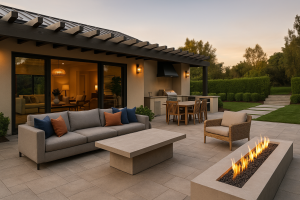Tilt-up building structures have become increasingly popular over the years. This cost-effective construction method is known for its numerous advantages, such as faster project completion, durable and long-lasting buildings, versatile design options, energy-efficient structures, excellent thermal performance, low maintenance requirements, earthquake-resistant buildings, and reduced labor costs.
With so many benefits, it’s no wonder that tilt-up building structures are being used for a variety of commercial, industrial, and institutional projects. In this article, we’ll explore the top 10 advantages of tilt-up building structures, which have made them a preferred choice for many construction projects.
Cost-Effective Construction Method
Tilt-up construction is a cost-effective building method that offers many advantages over traditional construction techniques. In this section, we’ll explore some of the benefits of tilt-up construction that make it a smart choice for your next building project.
What is Tilt-up Construction?
Tilt-up construction is a method of building where large concrete panels, or “tilt-up panels,” are cast horizontally on a concrete slab and then tilted up into place using a crane. Once the panels are in place, they are secured to the foundation and to each other, creating a strong and durable building structure.
Now, let’s take a closer look at some of the advantages of using tilt-up construction for your next building project.
| Advantages of Tilt-up Building Structures |
|---|
| Cost-effective construction method |
| Faster project completion |
| Durable and long-lasting buildings |
| Versatile design options |
| Energy-efficient structures |
| Excellent thermal performance |
| Low maintenance requirements |
| Earthquake-resistant buildings |
| Reduced labor costs |
As you can see, there are many benefits to using tilt-up construction for your next building project. In the next sections of this article, we’ll explore each of these advantages in more detail.
Top 10 Advantages of Tilt-up Building Structures
Faster Project Completion
One of the most significant advantages of tilt-up building structures is faster project completion. Compared to other construction techniques, tilt-up construction reduces the construction timeline by several weeks or even months, depending on the project’s size and complexity. The building’s walls and roof are constructed simultaneously, reducing the time required to complete these two integral parts of the construction process. This means that the building can be occupied sooner, allowing businesses to start their operations earlier than expected.
Furthermore, tilt-up construction is not affected by the weather. This allows construction to continue even during inclement weather conditions. This is a significant advantage over other construction techniques that are plagued by continuous weather-related delays, resulting in extended project completion timelines.
Durable and Long-Lasting Buildings
Tilt-up construction is known for producing durable and long-lasting buildings, making it an excellent choice for structures that need to withstand harsh elements or heavy use.
The tilt-up method involves pouring concrete panels on-site and then lifting them into place using a crane. These panels are then secured to the building’s foundation. Because of the solid concrete construction and the way the panels are anchored to the foundation, tilt-up buildings are resistant to damage from high winds, earthquakes, and other natural disasters.
Additionally, tilt-up panels provide a high level of fire resistance due to their concrete composition. This makes them a preferred building material in areas that are prone to wildfires.
Benefits of Durable and Long-Lasting Buildings
The benefits of tilt-up buildings’ durability and longevity are numerous:
- Longer lifespan: Tilt-up buildings can last for decades with little maintenance required, making them an excellent investment for long-term use.
- Lower repair costs: Because tilt-up buildings are so durable, they require fewer repairs over time, reducing maintenance costs for building owners.
- Better resale value: Durability and longevity are highly valued in the real estate market, and tilt-up buildings tend to hold their value well over time.
Overall, the durable and long-lasting nature of tilt-up buildings makes them an excellent choice for any project where longevity and resistance to damage are a top priority.
Versatile Design Options
Tilt-up building structures offer architects and designers a broad range of creative design options. With tilt-up construction, there is no need to limit the building to a boxy, rectangular shape. Instead, designers can incorporate unique features and shapes into the building’s exterior, such as curved walls, columns, and arches.
Moreover, tilt-up construction allows for a wide range of finishes to be applied to the building. The exterior can be painted, textured, or have various coatings applied to achieve a specific look and feel. Tilt-up construction also enables architects and designers to add unique features, such as accents, cornices, and decorative reveal patterns, which further enhance the building’s overall aesthetics.
Examples of Versatile Design Options:
| Building Type | Design Features |
|---|---|
| Retail | Large glass windows, curved walls, decorative reveals |
| Education | Large columns, textured finishes, sloping roofs |
| Office | Unique rooflines, sculpted features, complex façade designs |
In addition, tilt-up construction can also mimic the look of other building materials, such as brick, stone, or wood, while providing better durability and insulation than those materials. This makes tilt-up construction an ideal choice for designers who want to achieve a specific look without sacrificing performance or sustainability.
Energy-Efficient Structures
Tilt-up buildings offer many advantages, one of which is their energy efficiency. The construction method used in tilt-up buildings ensures that the buildings have excellent thermal performance, which translates to lower energy bills for their owners.
One of the primary ways that tilt-up buildings achieve energy efficiency is through their use of insulated concrete panels. These panels provide excellent insulation, which means that the building stays warmer in the winter and cooler in the summer. As a result, heating and cooling costs are reduced, which results in significant savings over the life of the building.
Another way that tilt-up buildings are energy efficient is through their use of natural light. Tilt-up buildings can be designed to incorporate large windows and skylights, which allow natural light to enter the building. This reduces the need for artificial lighting during the day, which further reduces energy costs. Additionally, natural light has been shown to improve employee productivity and well-being.
| Energy Efficiency Benefits of Tilt-Up Buildings |
|---|
| Lower energy bills |
| Reduced heating and cooling costs |
| Improved employee productivity and well-being through natural light |
Tilt-up buildings are also designed to be air-tight, which further enhances their energy efficiency. This helps to keep drafts out of the building, which means that less energy is needed to maintain a comfortable indoor temperature. Additionally, air-tight buildings are less prone to moisture damage, which can also result in savings over the life of the building.
What are some additional ways that tilt-up buildings can be made more energy-efficient?
- Using energy-efficient windows and doors
- Incorporating green roofs or solar panels
- Using a reflective roof coating to reduce heat absorption
- Incorporating an energy-efficient HVAC system
By incorporating these additional measures, tilt-up buildings can become even more energy-efficient, providing even greater savings for their owners.
Excellent Thermal Performance
Tilt-up building structures offer excellent thermal performance, providing energy-efficient solutions for various building needs. The building’s thermal performance is contingent on the amount of heat transferred between the inside and outside environment; the less heat transfer, the better the thermal performance.
With the use of insulated concrete panels, tilt-up buildings create better insulation, reducing heat transfer and minimizing energy loss. The panels’ insulation factor is achieved through the use of reinforced insulation, which creates a barrier, minimizing heat transfer, and improving the building’s energy efficiency. Additionally, the insulation factor helps to regulate the building’s internal temperature, reducing the need for additional heating or cooling systems, thus reducing the buildings’ energy consumption.
| Benefits of Excellent Thermal Performance |
|---|
| Improved energy efficiency, reducing energy consumption and cost. |
| Reduced environmental impact through sustainable building practices. |
| Increased occupant comfort by regulating internal temperatures. |
| Better indoor air quality through the reduction of pollutants and allergens. |
In summary, the use of insulated concrete panels in tilt-up building structures provides excellent thermal performance, offering a range of benefits that contribute to energy efficiency, sustainability, and occupant comfort. The use of these panels is a significant advantage that tilt-up building structures have over traditional building methods.
Low Maintenance Requirements
One of the biggest advantages of using tilt-up building structures is the low maintenance required. The tilt-up panels are made of durable materials that require minimal upkeep.
Compared to traditional building methods, which may require frequent painting, sealing, or other maintenance work to ensure the building’s integrity, tilt-up structures are virtually maintenance-free. This can save building owners significant time and money in the long run, as they won’t need to pay for expensive repairs or upkeep costs.
Tilt-up buildings are also resistant to weathering and other environmental factors, which means they are less likely to experience damage over time. With proper care and maintenance, tilt-up structures can last for decades without requiring any major repairs or upkeep.
Because of these low maintenance requirements, tilt-up buildings are an excellent choice for businesses and organizations that want to save money on building maintenance costs over time.
Earthquake-Resistant Buildings
One of the biggest advantages of tilt-up building structures is their ability to withstand earthquakes and other natural disasters. Tilt-up buildings have shown remarkable resilience in the face of earthquakes, making them a popular choice for construction in areas prone to seismic activity. This is due, in part, to the strength and durability of the materials used in tilt-up construction.
Tilt-up buildings are typically constructed with reinforced concrete, which is ideal for withstanding the forces of an earthquake. The concrete walls are reinforced with steel rebar, creating a strong and durable structure that can withstand the shaking and movement that occurs during an earthquake.
Additionally, tilt-up buildings are constructed with a solid, monolithic design, meaning that the walls are connected to the foundation and roof with a continuous concrete structure. This creates a building that is resistant to lateral movement, which is the primary cause of damage during an earthquake.
Overall, the earthquake-resistant design of tilt-up buildings offers a higher level of safety and security for occupants, making them an ideal choice for a variety of applications.
Reduced Labor Costs
Tilt-up construction has several advantages over traditional construction methods, including reduced labor costs. By utilizing this construction method, builders can reduce the amount of on-site labor required for a project, resulting in significant cost savings.
| Reasons for reduced labor costs: |
|---|
| Tilt-up panels can be manufactured off-site in a controlled environment, reducing the need for on-site construction labor. |
| Construction can be completed with smaller crews, as fewer workers are required for the installation of precast panels. |
| The use of tilt-up construction reduces the need for highly skilled labor for on-site concrete work, as most of the work is completed in a controlled environment off-site. |
Overall, the reduced labor costs associated with tilt-up construction contribute to making it a cost-effective alternative to traditional construction methods.
FAQ
Here are some frequently asked questions regarding the advantages of tilt-up building structures:
What is a tilt-up building structure?
A tilt-up building structure is a type of construction method where concrete walls are cast on the construction site, allowed to cure or harden, and then lifted into place with a crane.
Why are tilt-up building structures considered a cost-effective construction method?
Tilt-up building structures are cost-effective because they eliminate the need for expensive formwork and reduce labor costs. Additionally, the concrete walls are poured and cured on-site, which eliminates transportation costs for prefabricated materials.
How does the use of tilt-up building structures lead to faster project completion?
Tilt-up building structures can be completed more quickly because they reduce the amount of time spent on site preparation, formwork, and transportation of materials. Once the walls are cured, they can be lifted into place and secured in a matter of hours, compared to the days or weeks needed for traditional building methods.
What makes tilt-up building structures so durable and long-lasting?
Tilt-up building structures are made of reinforced concrete, which is a strong and durable material. Additionally, because the walls are cast on-site, they can be reinforced with extra steel for added strength and durability.
What are some of the design options available with tilt-up building structures?
Tilt-up building structures offer a wide range of design options, including different finishes and textures for the concrete walls, as well as the ability to incorporate decorative elements such as brick, stone, or tile.
How are tilt-up building structures energy-efficient?
Tilt-up building structures offer excellent thermal performance and can be designed to maximize natural light and ventilation. This reduces the need for energy-intensive heating, cooling, and lighting systems, which can result in significant energy savings over the life of the building.
What are some of the maintenance requirements for tilt-up building structures?
Tilt-up building structures have low maintenance requirements because the concrete walls are durable and resistant to damage from weather, fire, and pests. Regular cleaning and periodic sealing of the walls can help maintain their appearance and prevent damage from moisture.
Why are tilt-up building structures earthquake-resistant?
Tilt-up building structures are inherently earthquake-resistant because the reinforced concrete walls provide strong lateral support and can absorb significant seismic forces without collapsing or sustaining serious damage.
How do tilt-up building structures reduce labor costs?
Tilt-up building structures reduce labor costs because the walls are cast on-site, eliminating the need for expensive prefabricated materials and reducing transportation costs. Additionally, the use of a crane to lift the walls into place requires fewer workers than traditional building methods.










